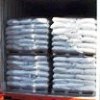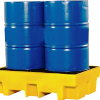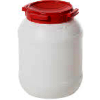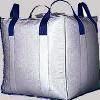Zinc carbonate, Zinc oxide, Zinc peroxide Chemically Pure n BP Ph Eur FCC Food Grade Manufacturers Suppliers, India
Anmol Chemicals are manufacturers of Specialty Chemicals and Pharmaceutical Excipients, in India. Anmol Chemicals Group has manufacturing facilities spread across India, representatives in Houston Chicago USA and toll manufacturers in China. We make IP, BP, USP, Ph Eur, FCC or Food Grade, ACS, AR or Analytical Reagent Grade, LR or Laboratory Reagent Grade and Pure Grades of various chemicals. All our items are analyzed to meet the required standards.
Our manufacturing facility is FDA GMP approved and ISO-9001, ISO 14000, OHSAS 18000, ISO 22000, FSSAI HACCP certified. We are offering products manufactured as per Kosher and Halal approved method. We are registered with "Reach" for export to European countries.
Zinc carbonate: CAS No.: 3486-35-9 & 5263-02-5, EC Code EINECS: 226-076-7, Molecular Weight: ----, Chemical Formula: [ZnCO3]2-[Zn(OH)2]3
Zinc oxide: CAS No.: 1314-13-2, EC Code EINECS: 215-222-5, Molecular Weight: 81.39, Chemical Formula: ZnO
Zinc peroxide: CAS No.: 1314-22-3, EC Code EINECS: ----, Molecular Weight: 97.4, Chemical Formula: ZnO2
Zinc Carbonate USP
3Zn(OH)2·2ZnCO3 549.01
Basic zinc carbonate.
Zinc subcarbonate [CAS 3486-35-9]
Zinc Carbonate contains the equivalent of not less than 70.0 percent of ZnO.
Packaging and storage: Preserve in tight containers.
Identification: A solution of it in a slight excess of hydrochloric acid responds to the tests for Zinc.
Insoluble matter: Dissolve 10-g Zinc Carbonate in a mixture of 100 mL of water and 7 mL of sulfuric acid, and heat on a steam bath for 1 hour. Filter the solution through a tarred sintered-glass crucible, wash with hot water, dry the crucible at 105 , cool, and weigh: the residue weighs not more than 20 mg (0.02%).
ChlorideL A 1.0-g Zinc Carbonate dissolved in a mixture of 20 mL of water and 3 mL of nitric acid shows no more chloride than corresponds to 0.03 mL of 0.02 N hydrochloric acid (0.002%).
Sulfate: Dissolve 10.0-g Zinc Carbonate in a mixture of 75 mL of water and 10 mL of hydrochloric acid, and filter. Neutralize the filtrate with ammonium hydroxide, dilute with water to 100 mL, and mix. To 10.0 mL of this solution add 1 mL of 0.6 N hydrochloric acid and 1 mL of barium chloride TS, mix, and allow to stand for 10 minutes. This test solution shows no more turbidity, if any, than that produced in a solution containing 0.10 mL of 0.02 N sulfuric acid and the same quantities of reagents used to prepare the test solution (0.01%).
Iron: Dissolve 1.0-g Zinc Carbonate in 20 mL of water and 3 mL of hydrochloric acid: the limit is 0.002%.
Lead: the limit is 5 ppm.
Substances not precipitated by ammonium sulfide: Dissolve 1.0-g Zinc Carbonate in 10 mL of water and 2 mL of sulfuric acid, dilute with water to 80 mL, add 10 mL of ammonium hydroxide, and pass hydrogen sulfide through the solution for about 30 minutes. Dilute with water to 100 mL, and allow the precipitate to settle. Decant the supernatant through a filter, and transfer 50 mL of the clear filtrate to a tarred dish, evaporate to dryness, ignite, gently at first and finally at 800 ± 25 , cool, and weigh: the weight of the residue does not exceed 2 mg (0.4%).
Assay: Transfer about 2.0 g of Zinc Carbonate, accurately weighed, to a 125-mL conical flask, add 50.0 mL of 1 N sulfuric acid VS, and swirl to dissolve. Add 3 drops of methyl orange TS, and titrate with 1 N sodium hydroxide VS to a yellow endpoint. Each mL of 1 N sulfuric acid consumed is equivalent to 40.69 mg of ZnO.
Zinc Oxide BP Grade
Ph Eur
ZnO -- 81.4 -- CAS 1341-13-2
DEFINITION
Content: 99.0 per cent to 100.5 per cent (ignited substance).
CHARACTERS
Appearance: Soft, white or faintly yellowish-white, amorphous powder, free from gritty particles.
Solubility: Practically insoluble in water and in ethanol (96 per cent). It dissolves in dilute mineral acids.
IDENTIFICATION
A. It becomes yellow when strongly heated; the yellow colour disappears on cooling.
B. Dissolve 0.1 g in 1.5 ml of dilute hydrochloric acid and dilute to 5 ml with water. The solution gives the reaction of zinc.
TESTS
Alkalinity: Shake 1.0 g with 10 ml of boiling water. Add 0.1 ml of phenolphthalein solution and filter. If the filtrate is red, not more than 0.3 ml of 0.1 M hydrochloric acid is required to change the colour of the indicator.
Carbonates and substances insoluble in acids: Dissolve 1.0 g in 15 ml of dilute hydrochloric acid. It dissolves without effervescence and the solution is not more opalescent than reference suspension and is colourless.
Arsenic: Maximum 5 ppm, determined on 0.2 g.
Cadmium: Maximum 10.0 ppm.
Iron: Maximum 200 ppm.
Lead: Maximum 50.0 ppm.
Loss on ignition: Maximum 1.0 per cent, determined on 1.00 g by ignition to constant mass at 500 ± 50C.
ASSAY: Dissolve 0.150 g in 10 ml of dilute acetic acid R. Carry out the complexometric titration of zinc. 1 ml of 0.1 M sodium edetate is equivalent to 8.14 mg of ZnO.
Zinc Oxide FCC Food Grade
ZnO Formula wt 81.38
CAS: 1314-13-2
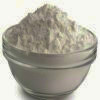
DESCRIPTION
Zinc Oxide occurs as a fine, white, amorphous powder. It gradually absorbs carbon dioxide from the air. It is insoluble in water and in alcohol, and is soluble in dilute acids and in strong bases.
Function: Nutrient.
REQUIREMENTS
Identification:
A. When strongly heated, a sample assumes a yellow color that disappears on cooling.
B. A solution of sample in a slight excess of 3 N hydrochloric acid gives positive tests for Zinc, Appendix IIIA.
Assay: Not less than 99.0% of ZnO after ignition.
Alkalinity: Passes test.
Cadmium: Not more than 3 mg/kg.
Lead: Not more than 10 mg/kg.
Loss on Ignition: Not more than 1.0%.
Substances Not Precipitated by Sulfide: Not more than 0.5%.
We also manufacture and supply Micro-Encapsulated Zinc Oxide, having core os zinc oxide and coating of vegetable oil or mono and diglycerides or as desired by the buyer.
Zinc peroxide (ZnO2) appears as a bright yellow powder at room temperature. It was historically used as a surgical antiseptic. More recently zinc peroxide has also been used as an oxidant in explosives and pyrotechnic mixtures.
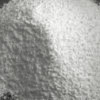
Specifications of Zinc Peroxide
Synonym: Zinc Superoxide
CAS No.: 1314-22-3
Molecular Formula: ZnO2
Molecular Weight: 97.4
Description: An off-white to yellowish white color powder.
Solubility: Practically insoluble in water and organic solvents. Soluble in mineral acids.
Chloride: Max. 50ppm
Sulfate: Max. 50ppm
Purity: 60% minimum and 70% minimum. Two different grades.
Zinc carbonate, Zinc oxide, Zinc peroxide Chemically Pure n BP Ph Eur FCC Food Grade Manufacturers
ANMOL CHEMICALS
S-8, SARIFA MANSION, 2ND PRINCIPAL SHAIKH HASAN MARG, MUMBAI 400009, INDIA
TEL: (OFF) 91-22-23726950, 23774610, 23723564. FAX: 91-22-23728264
e-mail: info@anmol.org
Copyright and Usual Disclaimer is Applicable
Exporters to USA, UAE, Europe, South Africa, Tanzania, Kenya, Egypt, Turkey, Nigeria, Uganda, Brazil, Chile, Argentina, Dubai etc.
Representatives in New York, Houston - Texas, Chicago - Illinois, Los Angeles.
Fast Selling IP BP USP ACS FCC Food Grades of Chemicals by Anmol Chemicals
Aluminium Magnesium Silicate or Magnesium Aluminum Silicate
Aluminum Chlorohydrate ----- Dihydroxyaluminum Sodium Carbonate
Aluminum Chloride ---------- Ammonium Sulfate ----- Ammonium Persulfate
Aluminum Potassium Sulfate - Ammonium Chloride ---- Ammonium Bicarbonate
Ammonium Carbonate --------- Benzyl Alcohol ------- Boric Acid
Benzoic Acid --------------- Borax; Sodium Borate - Benzoyl Peroxide
Calcium Chloride
Calcium Hydroxide ---------- Calcium Acetate ------ Calcium Butyrate
Calcium Lactobionate ------- Calcium Levulinate --- Calcium Saccharate
Carbamide Peroxide --------- Citric Acid ---------- Calcium Phosphate
Calcium Oxide -------------- Calcium Sulfate ------ Chromic Chloride
Cupric Chloride ------------ Ferric Chloride ------ Ferric Nitrate -------
Formaldehyde Solution ------ Fumaric Acid
Gentian Violet ------------- Glacial Acetic Acid
Lactobionic Acid ----------- Magnesium Butyrate
Magnesium Oxide ------------ Magnesium Chloride --- Magnesium Sulfate
Malic Acid ----------------- Maleic Acid ---------- Manganese Chloride
Manganese Sulfate ---------- Methylene Blue ------- Magnesium Trisilicate
Oleic Acid ----------------- Octyldodecanol ------- Phenylethyl Alcohol
Potassium Acetate ---- Potassium Carbonate -------- Potassium Hydroxide
Potassium Chloride --- Potassium Phosphate -------- Potassium Bitartrate
Propylene Carbonate -- Propyl Gallate ------------- Propionic Acid
Selenious acid
Sodium Molybdate ----------- Sodium Perborate ----- Sodium Phosphate
Sodium Propionate ---------- Sodium Acetate ------- Sodium Bicarbonate
Sodium Hydroxide ----------- Sodium Chloride ------ Sodium Thiosulfate
Sodium Selenite ------------ Taurine -------------- Urea
Vanadyl Sulfate ------------ Zinc Chloride -------- Zinc carbonate, Zinc oxide, Zinc peroxide
Zinc Sulfate
Other Best Selling Products
Ammonium Bromide ----------- Ammonium Phosphate --- Barium Chloride
Butylated Hydroxyanisole --- Butylated Hydroxytoluene
Calcium Nitrate Nitrite ---- Calcium Propionate --- Copper Sulfate
Ceric Ammonium Nitrate ----- Cinnamaldehyde ------- Isatoic Anhydride
Directly Compressible Calcium Carbonate ----------- Encapsulated Citric Acid
Encapsulated Fumaric Acid -- Encapsulated Sodium Bicarbonate -
Encapsulated Sorbic Acid
Potassium Bromide ---------- Potassium Iodide ----- Potassium Monopersulfate
Potassium Nitrate Nitrite
Sodium Bromate ------------- Skatole -------------- Sodium Butyrate
Sodium Nitrite & Nitrate --- Sodium Bromide ------- Sodium Diacetate
Sodium Formaldehyde Bisulfite Strontium Chloride -- Stannous Chloride
TBHQ Tertiary Butylhydroquinone







